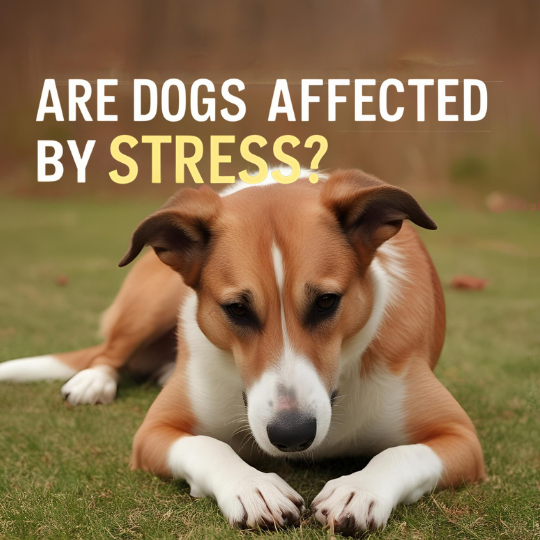Christmas has just finished and for many people that is a very stressful time of year. We know how it feels to be stressed suffering with headaches, tiredness, sweaty palms, irritability but what is actually going on in the body biochemically when under stress? Is all stress bad? Crashing the car, losing a job, trashing the remote control (OK that is just the guys) are clearly incidences of bad stress, also called Distress. Good stress or Eu-stress is getting married, having a fantastic holiday or even winning a million dollars. The chemical reactions occurring in the body during either are identical. Dogs also experience stress any time they are threatened and the flight or fight response kicks in. That might be in a veterinary surgery, at the groomers or even at the dog park when a gang of not so nice dogs comes running. It might even be when the next door kid jumps all over the dog in a not so enjoyable hug.
Hans Selye (1907-1982) is generally considered one of the key investigators into the human stress response with his work on the General Adaption System (GAS). He observed that the body responds to any external biological source of stress with a predictable biological pattern that attempts to restore the body’s internal homeostasis. The initial hormonal reaction is the fight or flight stress response and it evolved to handle stress quickly. Cavemen needed to fight the scary monster or flee rapidly.
There are three stages in the GAS reaction:
1) ALARM STAGE –
Recognition of the danger and the hypothalamic-pituitary-adrenal axis (HPA axis) kicks into gear which then influences the nervous system and adrenal glands. Cortisol, adrenaline and noradrenalin are released to provide instant energy. This stage is subdivided into two phases:
- Shock phase: in which a stressor effect occurs that resembles Addison’s disease. The body goes into a level of circulatory shock that results in changes including reductions in blood volume , sodium, osmolarity, blood chlorine and blood sugar.
- Antishock phase: The threat or stressor is identified and the body becomes alarmed. The sympathetic nervous system is activated and adrenaline is produced resulting in the fight-or-flight response with increases in muscular tonus, blood pressure and blood glucose. Glucocorticoids such as the stress hormone cortisol are produced.
In less modern times this energy produced would be used in physical action by either fleeing or fighting. In the modern world the stress response has become mal-adaptive in that fleeing and fighting are frequently no longer appropriate responses in either dogs or humans. Or in the case of dogs they are prevented from fleeing due to being trapped on leads and behind fences or worse on prong or shock collars. Therefore this response becomes harmful to the body in the following ways:
- The blood pressure surge due to adrenalin damages blood vessels of the heart and brain potentially leading to heart attack and stroke.
- Damage to cells and muscle tissues due to cortisol release which has been implicated in cardiovascular conditions, stroke, gastric ulcers and high blood sugar levels.
2) RESISTANCE STAGE –
This stage occurs when the source of stress is possibly resolved due to the fight or flight response being enacted. Homeostasis begins restoring balance and a period of recovery for repair and renewal takes place. Stress hormone levels may return to normal but you may have reduced defenses and adaptive energy left. However if the stressful condition persists the body may adapt by continuing to resist the stressor and staying in a state of arousal. If this process repeats too often with little or no recovery then problems will occur as seen in the final stage.
3) EXHAUSTION STAGE –
If the stress continues for so long the body’s ability to resist is lost as the adaptation energy supply is depleted. Stress levels go up and stay up in what is commonly called overload, burnout, adrenal fatigue, mal-adaptation or dysfunction. I believe in dogs this is what happens when they shut down due to chronic stress such as that experienced when flooding occurs in what is commonly called freeze. The ability to react stops but hormones continue to circulate. This is the stage of the general adaption syndrome that is most hazardous to health. It looks like the fight is over physically but biochemically the body is stuck in a vicious feedback cycle.
Chronic stress can damage nerve cells in tissues and organs with the hippocampus section of the brain being most vulnerable Thinking and memory are likely to become impaired, triggering anxiety and depression in dogs and humans. Adverse effects on the autonomic nervous system can contribute to high blood pressure, heart disease, arthritis and other stress related illnesses.
Cortisol levels, with a primary function to redistribute energy (glucose) to regions of the body most needing it to flee or fight e.g. major muscles and the brain, stay high. It also acts to suppress the body’s immune system. Hence organisms under chronic stress may succumb to immune complex diseases such as Addison’s and Cushing’s diseases both of which are on the rise in the dog population. The body becomes vulnerable to immune system attacks.
Signs of stress may be cognitive, emotional, physical, or behavioral (Items in bold are of particular interest in dogs)
Cognitive symptoms
- Memory problems
- Inability to concentrate
- Poor judgment
- Pessimistic approach or thoughts
- Anxious or racing thoughts
- Constant worrying
Emotional symptoms
- Moodiness
- Irritability or short temper
- Agitation, inability to relax
- Feeling overwhelmed
- Sense of l loneliness and isolation
- Depression or general unhappiness
Physical symptoms
- Aches and pains
- Diarrhoea or constipation
- Increased frequency of urination
- Indigestion
- Low blood sugar
- Nausea, dizziness
- Chest pain, rapid heartbeat
- Loss of sex drive
- Frequent colds
- Irregular periods.
Behavioural symptoms
- Eating more or less
- Sleeping too much or too little
- Isolating oneself from others
- Procrastinating or neglecting responsibilities
- Using alcohol, cigarettes, or drugs to relax
- Nervous habits (e.g. nail biting, pacing, self mutilation)
There is a clear link between levels of stress, especially chronic stress, and the production of disease. This list of effects reads like a who’s who of all the diseases that are on the rise not only in the canine population but also in humans. I am sure if we could get dogs to tell us how they are feeling we would also find many more of the symptoms of excessive stress also being present.
The conclusion to this long list of biochemical processes and diseases is what?
Understanding that EXCESSIVE levels of stress are bad for all animals (two and four legged) and that we need to reduce them wherever possible. Stress exists for a reason and all stress is not bad but chronic stress is and the more we force dogs to exist in our world by relying on stressful equipment such as electronic fences and collars and ensuring that dogs live in a way far removed from their natural way of life the more disease we will see in the canine population. The more humans place themselves in situations of excessive stress the sicker they will become. We also need to see research into the effects of chronic stress on dogs and the link in dogs between stress and disease.


Kareema
Healing Energy Animals
Kareema is the owners of Healing Energy Animals where devil dogs, horrible horses and crazy cats are turned into perfect pets using Relationship Animal Training and over 50 years of experience training a wide variety of animals.
Healing Energy Animals provides owners and pet professionals assistance with with common pet behavior training, feeding and grooming issues such as barking, escaping, scratching, aggression and fleas. Kareema consults and writes widely on a range of pet care issues for owners and also assists pet care professionals in setting up and growing their businesses by the provision of customer handling advice, sales and marketing strategies and up to date product information that allows for the differentiation of their pet care business from their competitors.
Healing Energy Animals is an Australian business but operates worldwide via the provision of virtual services.








